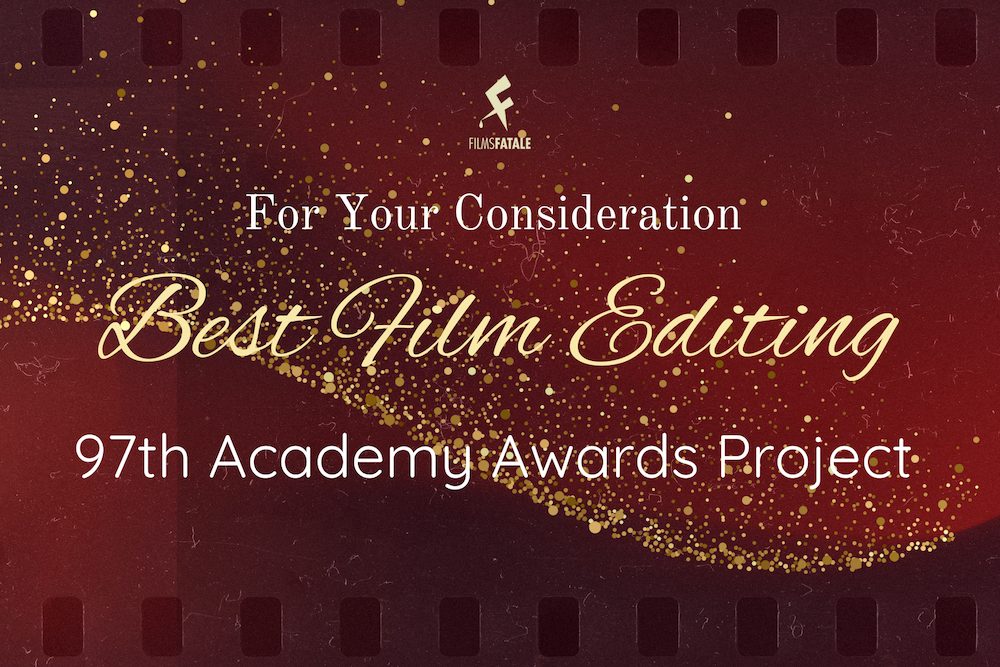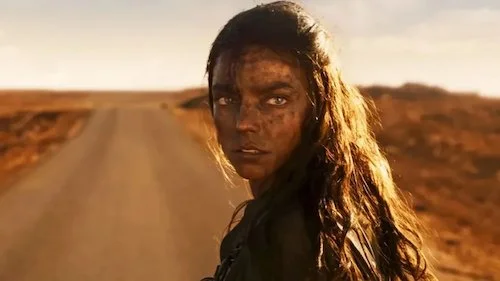Best Film Editing: Ranking Every Nominee of the 97th Academy Awards
Written by Andreas Babiolakis
Welcome back to another week of the Academy Awards Project! This is the final week of nominations that cover elements of films before we dive into the awards that celebrate entire motion pictures, be they of short or feature-length. We also dip into the final category that usually fits in best with other tech, production, or craft-based nominees: Best Film Editing (blame the Thursday announcement date for making the segueing of like-minded categories awkward this year). Like many people — including, arguably, members of the Academy — I used to get caught up in the dazzling show of fiery, quickly-paced cuts. However, as I watch more films and become wiser to what proper cinematic language looks like, I’ve learned that fast cuts aren’t everything. The primary purpose of cutting and splicing in the first place was to remove excess fat in films, abolish mistakes, and more. When editing was refined as an artistic practice, sure, the use of cuts and montages can be interesting, but I also think on-screen relationships (how a scene that is cut to relates to a previous scene), cues, and — the absence of cutting — allowing moments to breathe and remain still are just as important, if not more. With this in mind, I won’t be caught up in films that just have fast cuts and nothing to say with them. I will be looking at which motion pictures don’t feel like they are a second too long, possess the best pacing (for what the films are aiming for), and utilize the art of cutting, splicing, and the in-between the best. Before I need an editor to cut my rambling down, let’s proceed.
Here are your nominees for Best Film Editing ranked from worst to best.
Biggest Snub: Furiosa: A Mad Max Saga-Eliot Knapman and Margaret Sixel
First off: how dare everyone just move on from Furiosa (which, while it isn’t nearly as good as Mad Max: Fury Road, which I consider one of the greatest action films of all time, is damn good in its own right). Secondly, the fact that this film has zero nominations is a farce. I don’t expect it to be up for or win Best Picture, but this film got nothing for its amazing costumes, makeup and hairstyling work, and — especially — its sensational film editing, which is up there as being some of the strongest editing work of the year (Margaret Sixel also edited Fury Road, which I would maybe go as far as placing in my top ten best-edited films of all time list, should I ever make one). Not only is the pacing manic and relentless, you always get new information with the shots that each cut leads into (from what characters are seeing, to what events have occurred and will change the course of the ongoing missions). Similarly to Fury Road, Furiosa also never ever loses what it is trying to say when translated to images and shots, and there is an incredible fluidity that is created by the editing here; all bits of action are never chopped up and are able to seep into subsequent shots, thus being enhanced by the editing rather than hurt by it. Have a look at the clip below and tell me that I am wrong. The entire film boasts strong editing like this, and it’s atrocious that Furiosa wasn’t even a part of the conversation this year.
5. Emilia Pérez-Juliette Wefling
I don’t think the editing in Emilia Pérez is bad. I do think it’s a little standard, outside of a few sequences (like the “El Mal” dance number); in that same breath, some sequences are also a little wonky with their cuts or feel a teensy bit overlong. The tricky thing is that most well-editing films are meant to feel like they aren’t edited at all: the illusionary experience of having a film just exist and not feel hobbled together. For me, Emilia Pérez does feel this way, which is a good sign. I also never quite felt the length of the film, which I know isn’t the case for many other viewers (but I have to go based off of my own experience). Having said that, a film can have good editing and not necessarily take up a spot in the Best Film Editing category. Did this feel like a must because the film is a musical with dance numbers? There is a film that handles that specific topic even better. I don’t want to undersell the editing of this film, but I think nominating it here above many other better-edited works (especially the flashier examples like Furiosa, Dune: Part Two, Nickel Boys, Civil War, The Substance, Challengers, et cetera) is overselling it, too.
4. Wicked-Myron Kerstein
While I think the editing in Wicked is stronger than Emilia Pérez, I also think it’s a bit strange to have the film nominated here above some of the aforementioned snubs. There are sequences that stand out, like the “What Is This Feeling” number below, so at least there is enough to marvel at in this category. On the other hand, this is the only nominated film there that — please don’t kill me — I feel is a little too long. The second act of three is the only portion that somewhat lags a little bit; I’d shave off at least ten minutes. This isn’t a disastrous amount of time, mind you, and Wicked gets back to feeling unstoppable by its third act (which I wouldn’t trim a second of). Like Emilia Pérez, the majority of Wicked is edited well enough. I do think there are standout moments, but, otherwise, I also don’t see Wicked as the must-have nominee here above other titles.
3. Conclave-Nick Emerson
It may seem silly to have a solid drama above musicals in this category, but I think Conclave is deceptively well edited; maybe not more than the snubs I’ve brought up earlier, but enough that a nomination here actually makes sense to me. This could have felt like a drab, boring, typical Oscar-bait film that doesn’t know when to quit, but, instead, Nick Emerson makes Conclave feel tight and compelling. Furthermore, I love the little connective flourishes which can be seen in the sequence below, where it doesn’t feel like we’re looking at the splicing of two unrelated takes, but, rather, the observation of a real event via omnipresence. The characters flow into each shot effortlessly. Again, cutting for the sake of cutting is not worthwhile, but I’d argue the cuts below are important at creating slight tension when needed, gathering information from each shot (expressions via mid-range closeups, the lack of compassion via the emptiness found in wider shots, et cetera). This is an example where the less-obvious editing is actually far stronger than it may initially seem; I do recommend digging into Conclave in this way and seeing the finer details.
2. The Brutalist-David Jancso
Yes. I stand by a four-hour film being nominated. The Brutalist felt like it was less than three hours the first time I watched it, let alone the fact that it is closer to being an entire sixth of a standard day in length. I adore the breath used in this film (restraint in film editing cannot be understated; not once does David Jancso over-embellish scenes with cuts for no reason, or out of fear that a four-hour film would feel exhausting). Jancso cuts precisely when needed. Take the below scene, for instance. This clip kicks off with a long shot of two characters before tossing in a couple of cutaways to other onlookers, as to finally start stirring the tension of the scene, show the spacial relation between all parties involved, and making our protagonist feel gawked at before the insult delivered at the end of the sequence. The harmony that once made us feel at home like our protagonist and his wife is interrupted by the gaze of bigots and classism. Never mind the gorgeous montages throughout The Brutalist (which feel like icing on the cake), this film is sublimely edited in every single way (yes, I said it). Only one other film in this category can stand above it.
1. Anora-Sean Baker
One of the best edited films of the year is unquestionably Anora. While some may disagree, I don’t think I’d cut a single second of this film, and it felt like it was ninety minutes in length when I saw it, not nearly two-and-a-half hours. Like David Jancso The Brutalist, Sean Baker — who not only directed and wrote this film but also edited it himself (!) — knows when to let scenes breathe on their own, and when rapid-paced cutting is necessary (the second-act is full of these moments). Anora always feels like a high-stakes environment, but it never overstays its welcome since Baker knows how to keep things frantic for his characters but a little less overwhelming for his audience. Anora feels like a fairy tale come true in its first third, a nightmare in its second act, and begrudging acceptance amidst refusal in its final moments. Much of this descent stems from how Baker has a complete control of the film’s pacing, and it’s a marvelous achievement to experience.
Who I Want To Win: I’m rooting for either Anora or The Brutalist here. Best Film Editing not only rewards the winners here, but it creates an indication of what film may win Best Picture as well, and both of these films are ones I’d want to win in that category as well.
Who I Think Will Win: Right now, I’d say this is between The Brutalist and Conclave. I’ll give it to The Brutalist just because it has more of a chance to win Best Picture (and it appears to be likely cleaning up numerous categories all across the board), but if Conclave picks this up on Oscars night, I wouldn’t be surprised if the film picked up even bigger awards, if you catch my drift. I can also see Anora picking up some steam here and for Best Picture as well, but for now that doesn’t quite seem to be the case.
The Academy Awards Project will continue tomorrow with another category: Best Original Screenplay. We’re going to rank every single nominee in every single category, Monday through Friday. You don’t want to miss it!
Andreas Babiolakis has a Masters degree in Film and Photography Preservation and Collections Management from Ryerson University, as well as a Bachelors degree in Cinema Studies from York University. His favourite times of year are the Criterion Collection flash sales and the annual Toronto International Film Festival.









